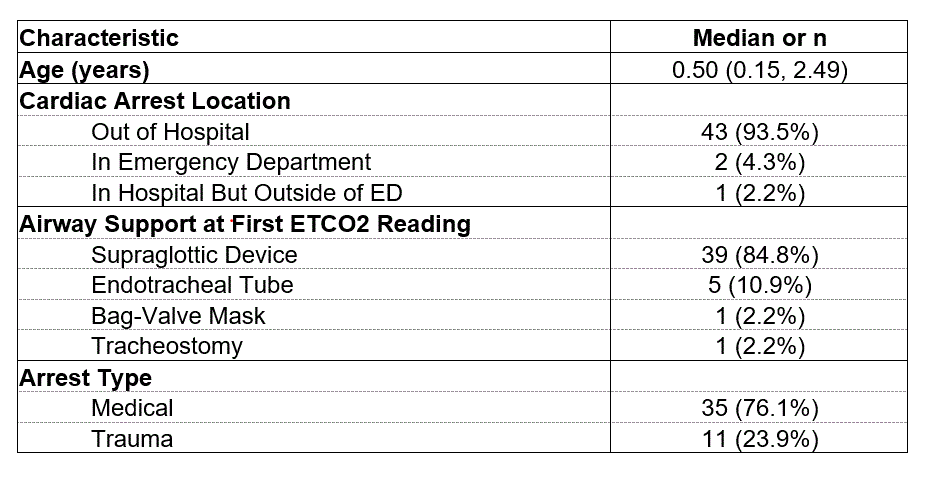Emergency Medicine: All Areas
Emergency Medicine 11
478 - End-Tidal Capnometry During Cardiac Arrest in a Pediatric Emergency Department: A Video Review Based Study
Publication Number: 478.31

Michael T. Stratton, MD, MS (he/him/his)
Point of Care Ultrasound Fellow
Cincinnati Children's Hospital Medical Center
Cincinnati, Ohio, United States
Presenting Author(s)
Background:
Capnometry measurements of end-tidal carbon dioxide (ETCO2) during cardiopulmonary resuscitation (CPR) have been studied as a predictor of return of spontaneous circulation (ROSC). Adult studies demonstrate an association between higher ETCO2 values during CPR and ROSC, though studies in children are limited to in-hospital cardiac arrests. The relationship between ETCO2 and ROSC in children during CPR in the pediatric emergency department (PED) is unknown. This is a critical gap in the literature, as most pediatric arrests presenting to the ED are due to respiratory failure compared to primary cardiac events in adults, and this difference may have an impact on ETCO2.
Objective: Describe capnometry values in the PED during CPR and determine whether there is an association between ETCO2 and ROSC.
Design/Methods:
We conducted an observational cohort study utilizing video review. Patients (≤18 years) undergoing CPR from March 2021 to October 2022 were included. ETCO2 values were recorded every 5 seconds from the first observed ETCO2 value until ROSC or termination of resuscitation. Our primary outcomes were initial ETCO2 values, ETCO2 values during the first minute, and ETCO2 values during the subsequent 10 minutes of resuscitation. Our secondary outcome was ROSC, defined as cessation of CPR with survival to hospital admission. Median ETCO2 values among patients with and without ROSC were compared using the Wilcoxon Rank Sum Test.
Results:
51 patients <18 years old underwent CPR in our PED. 5 patients (9.8%) did not have adequate video recordings or any ETCO2 values, leaving 46 patients analyzed. The median age was 0.5 years (IQR 0.2-2.9 years). Overall, 12 patients (26%) achieved ROSC with survival to admission. 11 patients (23.9%) were traumatically injured. 39 patients (85%) had a supraglottic device in place at the time of initial ETCO2. The median values for initial ETCO2, ETCO2 over the first minute and ETCO2 over the first ten minutes were 11 mmHg (IQR 7-20), 19 mmHg (IQR 13-34), and 19 mmHg (IQR 12-33), respectively. When comparing patients who achieved ROSC versus those who did not, the median ETCO2 values were significantly higher in all categories (initial ETCO2, ETCO2 over the first minute, ETCO2 over the first 10 minutes) (Table 2).
Conclusion(s):
Though limited by the relative infrequency of cardiac arrest in the PED, in this video-review based observational cohort of PED patients, ETCO2 values were higher in patients who achieved ROSC with survival to admission.
.gif)
